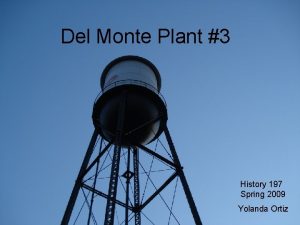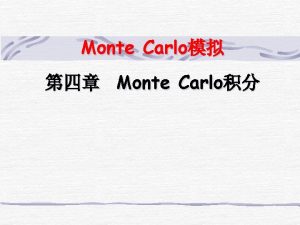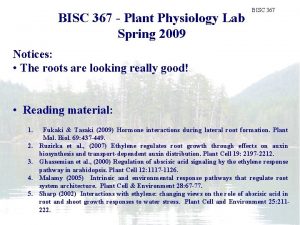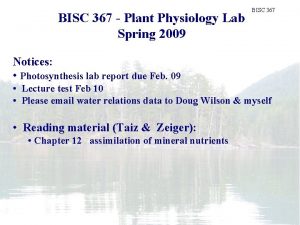Del Monte Plant 3 History 197 Spring 2009

















- Slides: 17

Del Monte Plant #3 History 197 Spring 2009 Yolanda Ortiz

Between 1792 and 1794, George Vancouver visited he observed; …here were planted peaches , apricots , apples , pears , figs and vines, all of which excepting the latter promised to succeed very well. Geroge Vancuver Spanish Missionaries along with citizens of Mexico developed a sustainable society in the Santa Clara Valley. http: //www. historysanjose. org/labellegacy/places/rancho_el_potrero. html

El Pueblo De San Jose de Guadalupe: First pueblo linking Missions to presidios Rancho Las Animas: First recorded Mexican land grant issued in 1802. Merchant and commercial trading emerged Map of Santa Clara County Ranchos, by Ralph Rambo, 1968

Embarcadero de Santa Clara: El Rio de San Jose Guadalupe, the Guadalupe River was navigated by tradesman representing many industries in Santa Clara County during the Mexican Period: Trade goods included hides and tallow, lumber, quick silver and agricultural products http: //www. museumca. org/creeks/1400 -Resc. Guadalupe. html

Santa Clara Valley Agriculture Vines dating back to Rancho Era at Mission Santa Clara De Asis. Provided sustainable communities. By 1866 a box supplier for the fruit industry appeared in San Jose along First Street. Passing Farms: Enduring Values, Yvonne Jacobsen

The San Jose Fruit Packing Company was founded in 1875 by Dr. James M. Denton and his son Thomas D. Denton. It was the first cannery in the Santa Clara Valley. .

Fruit Processing becomes part of mainstream American culture. 1890 s the refrigerator car increases the possible supply of fresh fruits. In 1891 San Jose Fruit Packing Company bought site of Del Monte Plant SJFPC joined several other canneries to create the California Fruit Canners Association in 1899, merger of 18 Pacific Coast canning companies http: //www. waymarking. com/waymarks/WMEHH

Major source of fruit products worldwide 1917 Calpack begins to expand into a giant corporation that owned all aspects of food production. Alliances with growers through long term contracts established control from farming to marketing. http: //www. historysanjose. org/cannerylife/through-the-years/1917 -1966/cal-pak/index. html 801 Auzerais Del Monte Plant #3

Labor Recruitment Largest seasonal employer of immigrant communities Both growers and canners employed Mexican citizens that had been drawn by the vast agricultural economy Traveled by train, ancestral water ways, historic trails Employed as strike breakers during the 1931 strike among cannery workers http: //www. historysanjose. org/cannerylife/through-the-years/1917 -1966/unions. html

Mechanization of the canning industry During the late 1940’s -Men and Mexican women were hired to work on the lines, -men worked in the warehouses, where the products were ready for major distribution. Supervisor positions were available to those who spoke English -One head supervisor for lines & her assistant, -Floor ladies for each type of fruit

Seasonal employment While they welcomed Mexicans as temporary workers, the Valley’s white residents often contended that permanent settlement by the population would threaten the region. 1930 s cannery labor force mostly Italian and seasonal Mexican labor from areas in Northern Mexico. Historical trails mark the ongoing movement of people between United States and Mexico. Canning in San Jose By the 1940 s, the county produced 90 percent of California's canned fruit and the center of the worlds fruit processing www. nps. gov/juba/

1950 s-1999 Cannery Employees Angel Ortiz immigrated from San Nicholas, Santiago Papasquiaro, DGO into San Jose in the late 1940’s Along with large portions of the towns population in Mexico. The Ortiz Family has been emigrating into San Jose since father of Angel, Placido Rivera. Ortiz seasonally employed by Cal Pack in the early 20 th century. Corn harvest, in Angels hometown expert in farming and cattle grazing Photographs: courtesy of Herminia Ortiz

Mexican Community Concentrated West of Market Street In the vicinity of the Del Monte Plant #3 Established during the 1940’s a cannery culture: The exchange of information among the population. Willow Street concentration of Mexican businesses and worship also the neighborhoods surrounding Balbach Park to this day

Historic Southern Pacific intersection Fruit Cocktail Pear Peaches Grapes Pineapple Cherry Nurse Southern Pacific continues Weigh station Southern Pacific Railroad Administration Loading Dock 3. Main Office workers punched in Break room 2. Los Gatos Creek

1967 Calpack adopts Del Monte Corporation name By 1987 only 8 canneries in county (used to have greatest number in the world) KB Homes redevelops the sight of Del Monte Plant #3

Del Monte Plant #3 Closes and moves in 2000 to Modesto, Ca


































